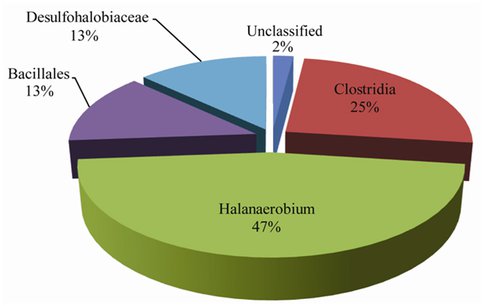2012 Annual Science Report
 University of Wisconsin
Reporting | SEP 2011 – AUG 2012
University of Wisconsin
Reporting | SEP 2011 – AUG 2012
Project 2C: Roles of EPS Excreted From Anaerobic Microorganism in Governing Dolomite Composition and Crystallization
Project Summary
EPS from anaerobic microorganisms of sulfate-reducing bacteria, fermentation bacteria, and methanogen can catalyze dolomite nucleation and growth. Compositions of dolomite and Ca-Mg-carbonates is related to the amount of dissolved EPS. Polysaccharide in the EPS is the key to the dehydration of surface water and dolomite crystallization at room temperature. Low temperature dolomite / sedimentary dolomite can be a potential biosignature. The discovery also provides key to solving the “Dolomite Problem” that has puzzled geologists for decades.
Project Progress
In the past year, we have made substantial progress in our investigation of the roles of microorganisms in sedimentary dolomite formation. We have had two papers published; one in Geochim. Cosmochim. Acta (Zhang et al., 2012a) and one American Mineralogist (Zhang et al., 2012b). We also have another paper which is in revision with Geochim. Cosmochim. Acta.
Our ongoing studies have been focused on catalysis effect of extracellular polymeric substances (EPS) excreted from anaerobic microorganism on dolomite crystallization. To do this, an anaerobic microbial consortium were enriched and cultured from pore fluids which were collected from Deep Springs Lake, California, where modern dolomite is still precipitating. Our high throughput sequencing analyses showed that the dominant microorganisms in the consortium culture were fermentation bacteria (FB, ~47 ) and sulfate-reducing bacteria (SRB, 13) (Fig. 1). EPS were extracted from the growing consortium cultures and further purified for synthesis experiments. Our data evidently demonstrated the catalysis effect of EPS on disordered dolomite formation, whereas solutions containing dead cell pellets with EPS removed only produced aragonite, giorgiosite (Mg5(CO3)4(OH)2•5(H2O), and nesquehonite (MgCO3•3H2O). The MgCO3 content in synthetic Ca-Mg carbonates increased with the concentration of EPS in experimental solutions. Ca-rich dolomite with 45 mol% MgCO3 can be precipitated from solutions with an Mg:Ca ratio of 5:1 and 177 mg/L of EPS. We suggest that the polysaccharides in EPS exert the catalysis effect since our previous studies demonstrated that disordered dolomite can be precipitated in polysaccharides-bearing solutions (Zhang et al., 2012b). Analyses on the total polysaccharides content of the EPS that we extracted suggested ~13 wt% of polysaccharides in EPS and the sugar monomer analyses conducted with gas chromatography combined mass spectrometry indicated that the polysaccharides in EPS consisted of glucose (47 mol%), xylose (28.6 mol%), and mannose (24.4 mol%).
To confirm the active microorganisms which catalyze dolomite precipitation, we cultured pure species of FB (Halanaerobium saccharolyticum subsp. saccharolyticum corrig., abbreviated as HS) and SRB (Desulfohalobium retbaense strain 5692, abbreviated as DS) and collected biomass from both species for synthesis experiments. Our data showed that both the biomass of HS and DS can catalyze dolomite crystallization, which therefore defined a link between FB and dolomite formation which has never been reported before.
In addition, similar syntheses were also conducted with the EPS extracted from the growing culture of pure methanogens speicies (Methanosarcina barkeri, abbreviated as MB), which also proved that EPS from MB can promote dolomite crystallization. Further analyses will be carried out to characterize the total polysaccharides content in the EPS from MB and mono-sugar components of the polysaccharides in EPS.
To summarize, our findings have broad implications for the study of sedimentary dolomite since (1) our study defined the role of anaerobic microorganisms and EPS in dolomite formation; (2) the link between FB and dolomite formation has never been reported before and the ubiquitous distribution of FB in natural environments can also explain the formation of Fe-bearing dolomite and dolomite formation in dissolved sulfate-poor environments; (3) the close connection between anaerobic microorganism and disordered dolomite formation may imply a possible mineralogical biosignature of some poorly crystallized sedimentary dolomite.
High throughput sequencing analysis of the consortium.
Publications
-
Zhang, F., Xu, H., Konishi, H., Kemp, J. M., Roden, E. E., & Shen, Z. (2012). Dissolved sulfide-catalyzed precipitation of disordered dolomite: Implications for the formation mechanism of sedimentary dolomite. Geochimica et Cosmochimica Acta, 97, 148–165. doi:10.1016/j.gca.2012.09.008
-
Zhang, F., Xu, H., Konishi, H., Shelobolina, E. S., & Roden, E. E. (2012). Polysaccharide-catalyzed nucleation and growth of disordered dolomite: A potential precursor of sedimentary dolomite. American Mineralogist, 97(4), 556–567. doi:10.2138/am.2012.3979
-
PROJECT INVESTIGATORS:
-
PROJECT MEMBERS:
Hiromi Konishi
Research Staff
Evgenya Shelobolina
Research Staff
Fangfu Zhang
Doctoral Student
-
RELATED OBJECTIVES:
Objective 7.1
Biosignatures to be sought in Solar System materials
Objective 7.2
Biosignatures to be sought in nearby planetary systems


